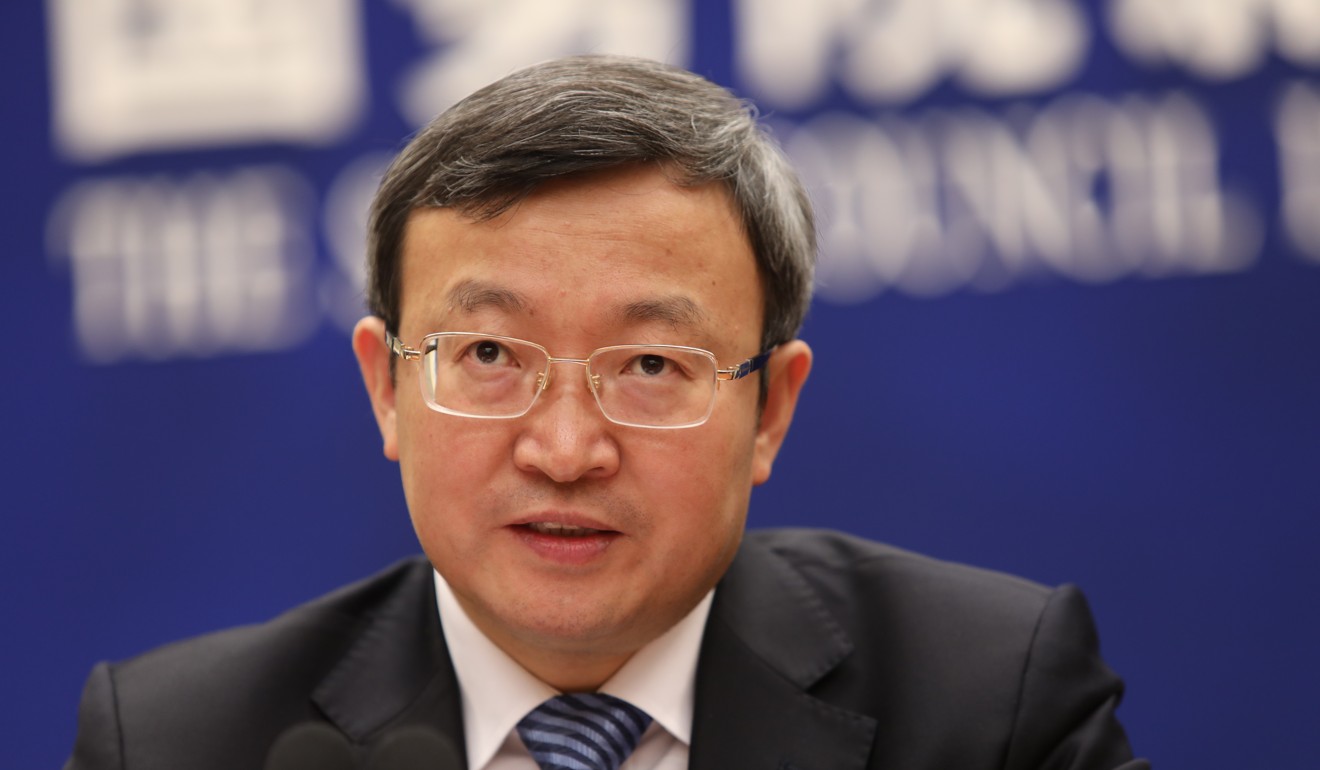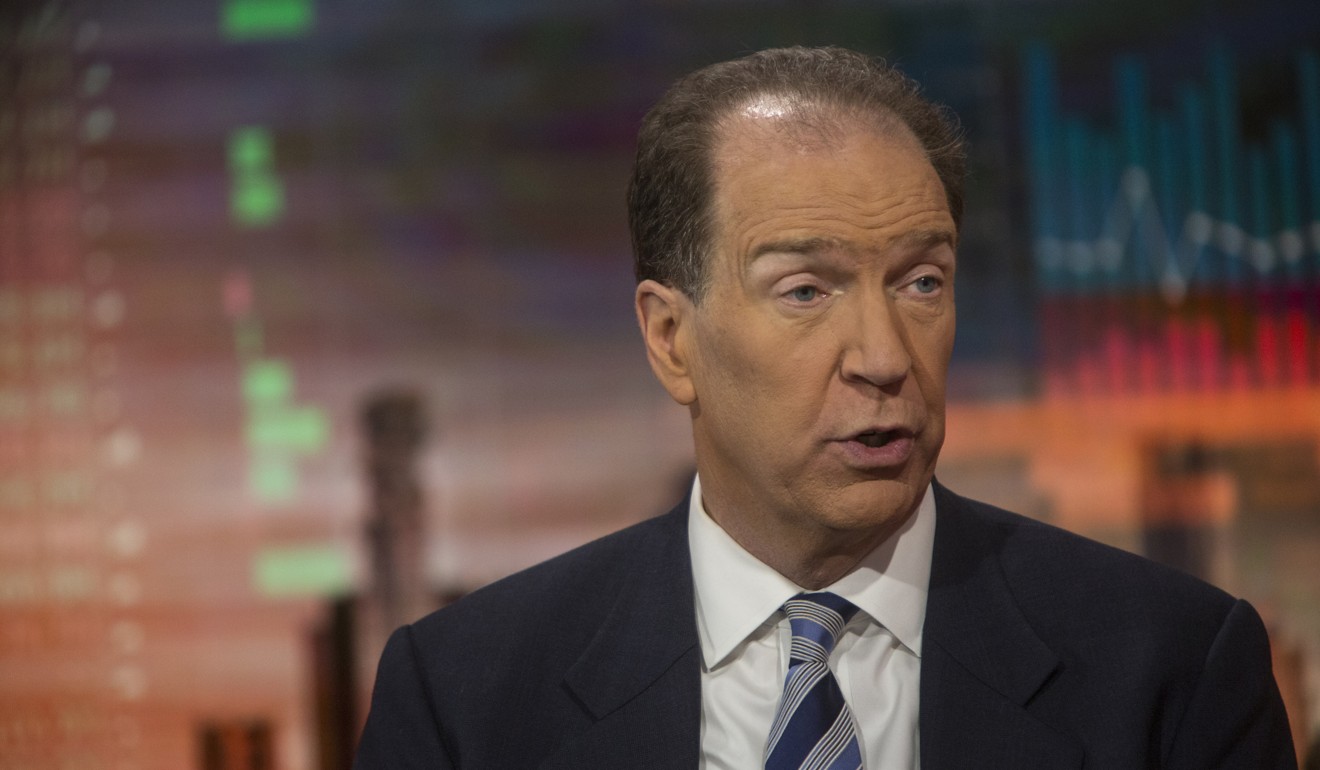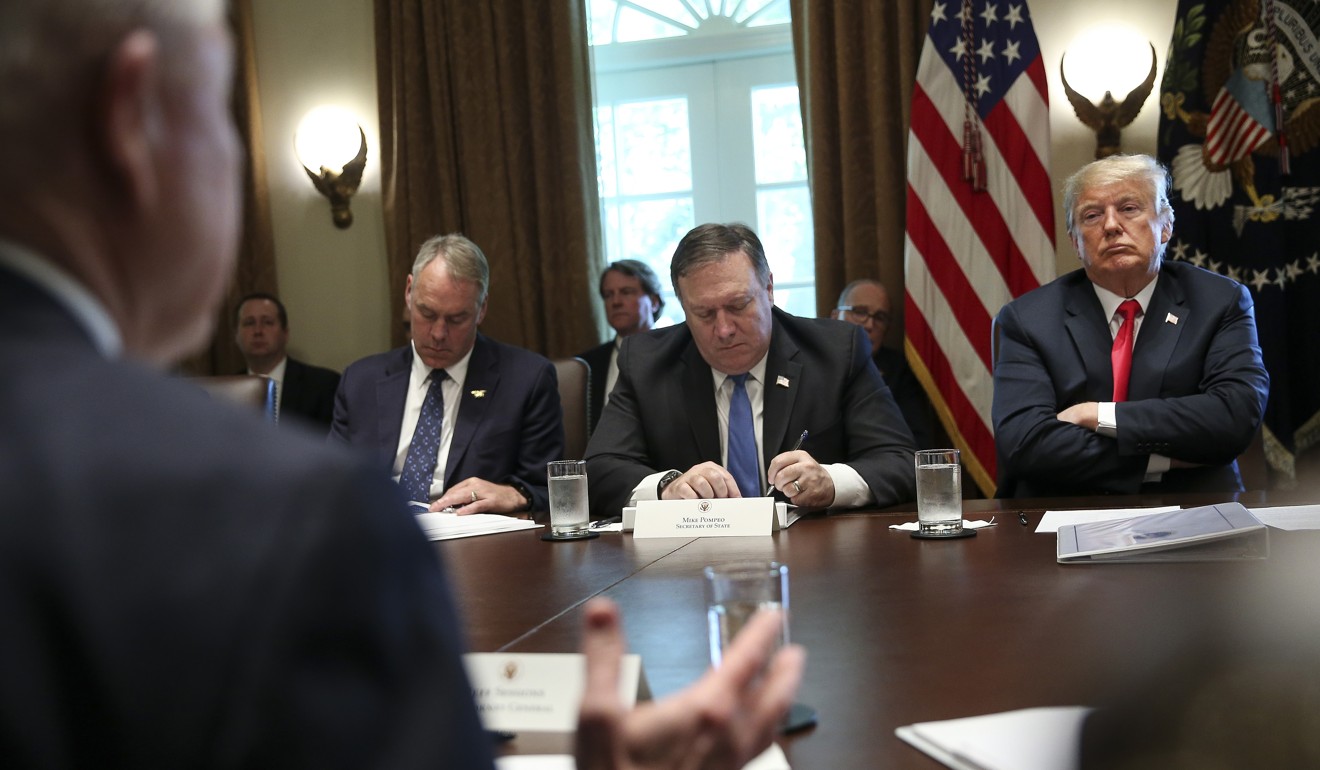
Donald Trump seeking ‘results-oriented’ ties with China as resumption of trade talks nears, US diplomat says
The remarks by Principal Deputy Assistant State Secretary Alice Wells came as the two sides prepare to resume trade talks that have been suspended since June
US President Donald Trump’s administration looks forward to “results-oriented and very constructive” relations with China, despite the escalating trade war between the world’s top two economies and Beijing’s growing worries about Washington’s Indo-Pacific strategy, a senior US government official said.
The remarks by Principal Deputy Assistant Secretary of State Alice Wells at a media briefing on Monday came just days before the two sides are to resume trade talks that have been suspended since June. A Chinese delegation led by Deputy Commerce Minister Wang Shouwen is to meet US Treasury Undersecretary David Malpass in Washington on August 22 and 23.
“We want to have a results-oriented and very constructive bilateral relationship with China,” Wells told reporters in Washington. “Obviously there are areas of cooperation and areas of tension.”

She emphasised that the US seeks “fair and reciprocal trade” through the free and open system the US established at the end of the second world war to benefit all nations in the Asia-Pacific region.
Amid its escalating trade tensions with Beijing, the Trump administration has moved to bolster US engagement with the Indo-Pacific region. In Singapore two weeks ago, US Secretary of State Mike Pompeo said Washington would provide nearly US$300 million for new security funding in the region.
That move came on top of a new infrastructure and energy investment plan for regional nations unveiled by Pompeo on July 30.
Although Foreign Minister Wang Yi said China welcomed and was willing to work with the US to develop and improve regional security, Chinese diplomats have suggested the Trump administration’s Indo-Pacific strategy has Beijing deeply concerned, since it is regarded as part of a broader attempt to thwart China’s ambitions of becoming a global superpower.
Wells attempted to play down those concerns and dismissed the idea that the July 30 Indo-Pacific economic initiative was aimed at countering Beijing’s broader goals in the region, especially related to its ambitious Belt and Road trade and infrastructure initiative.

“This is not about spending dollar for dollar, for instance, compared to the Belt and Road Initiative,” the US diplomat said. “I don’t think this is at cross purposes, and certainly it does not need to be at cross purposes, with what China is doing.
“We support investment that meets international standards, that is sustainable, transparent and meets the need of the countries and does not lock the countries into unsustainable projects,” she said.
In the decades ahead, countries in the Indo-Pacific region will have a huge need for infrastructure investment valued at about US$27 trillion, Wells said.
But she echoed senior Trump administration officials in her concern about China’s growing regional economic and military expansion. She was most critical of the Belt and Road Initiative’s sovereign debt traps that she said had the international community warily watching Beijing.
For instance, Beijing’s acquisition of a major port in Sri Lanka after the island nation south of India was unable to repay the Chinese loans that had funded the port’s construction was an example of the debt trap in the massive infrastructure plan, she said.

But Wells said extensive Sino-US collaboration remained a strong possibility “as long as China supports the integration of the region and does not mortgage the future of individual countries to unrealistic and unsustainable loan terms”.
Both nations should continue to cooperate on fighting terrorism in South Asia and on advancing the peace process in Afghanistan, the diplomat said.
She sought to play down China’s concerns about Washington’s quadrilateral security alliance with Japan, India and Australia.
“The Indo-Pacific strategy is for everyone,” Wells said.
Wells called the investment plan announced by Pompeo and a trilateral financing agreement with Japan and Australia on joint projects good examples of what the Indo-Pacific strategy could become.
Diplomats from the four nations have met twice in the past year to discuss the idea of a new quadrilateral grouping.
“We are really trying to put meat on the bones,” Wells said. “How do we develop specific areas that we can demonstrate to the international community and countries in the region that we are able to effectively work together?”
However, in another move that looks set to unsettle Beijing, the US has tried to promote security and defence relations with India, China’s opponent in a bitter border row last year.
Wells spoke highly of Washington’s military ties with India, citing upcoming inaugural “two plus two” talks between the nations early next month. Pompeo and US Defence Secretary James Mattis are to travel to India for talks with their Indian counterparts aimed at enhancing the strategic US-India partnership.
“India plays a central role in US national security, which is enshrined in the president’s national security strategy as well as the administration’s South Asia and Indo-Pacific strategies,” Wells said. “At the upcoming ministerial talks we will look to discuss how we operationalise India’s status as a major defence partner.”
She noted that US-India security ties, which include US$18 billion worth of cooperative defence spending, have surged since 2008.
“We do more military exercises with India than with any other country in the world,” Wells said, adding that with the upcoming “two plus two” talks, both sides would focus on how to take their partnership to a new level.

